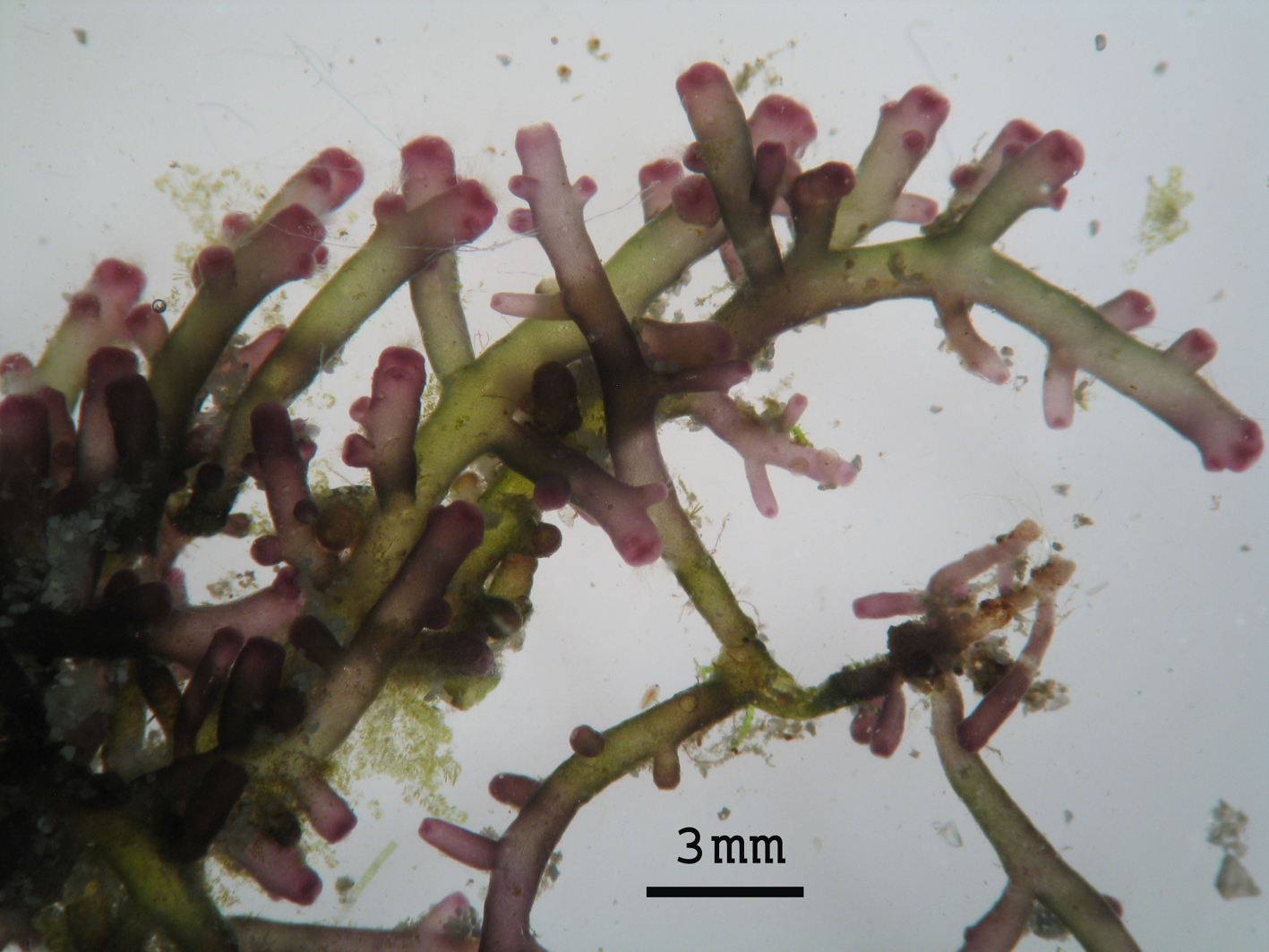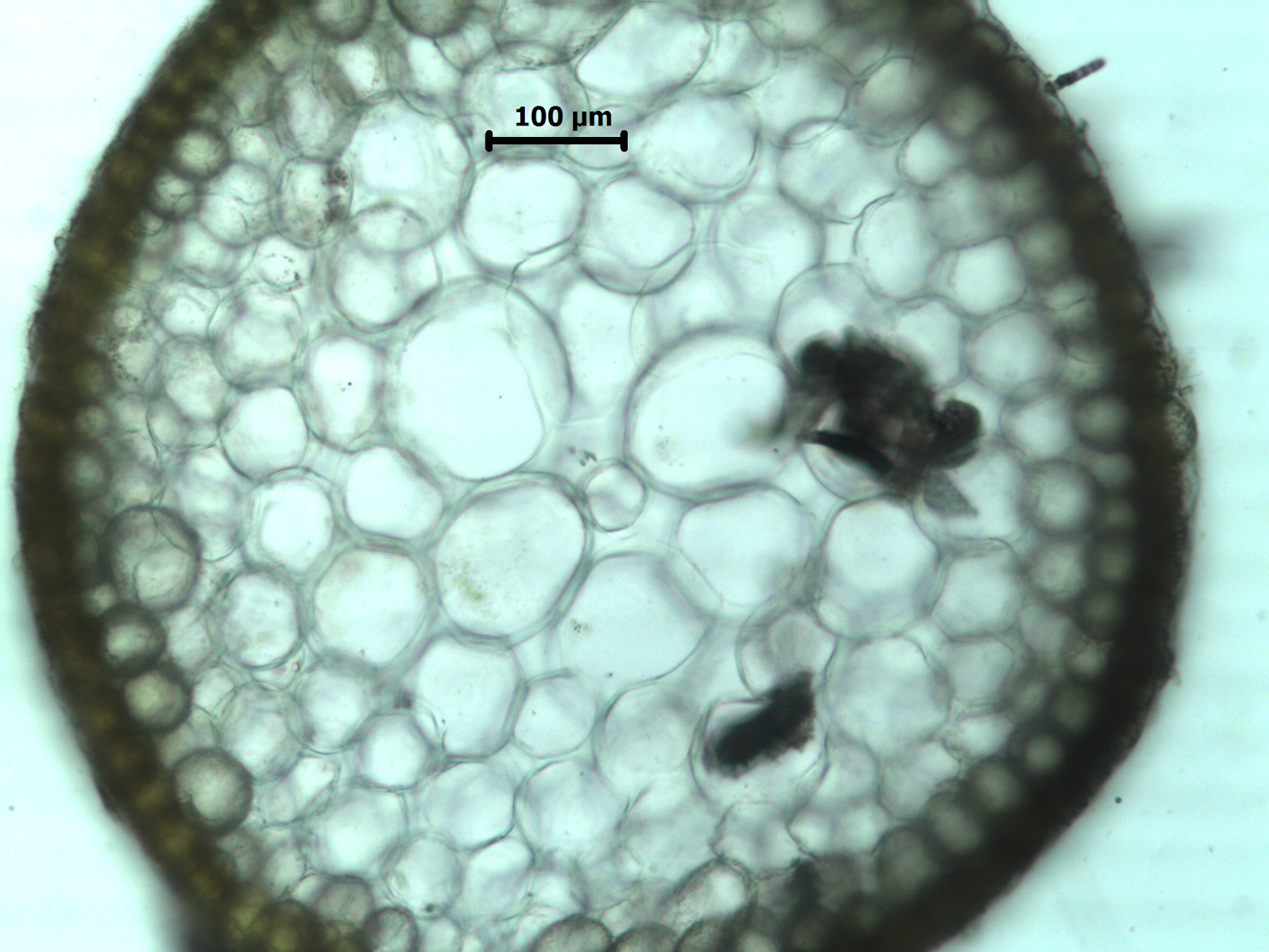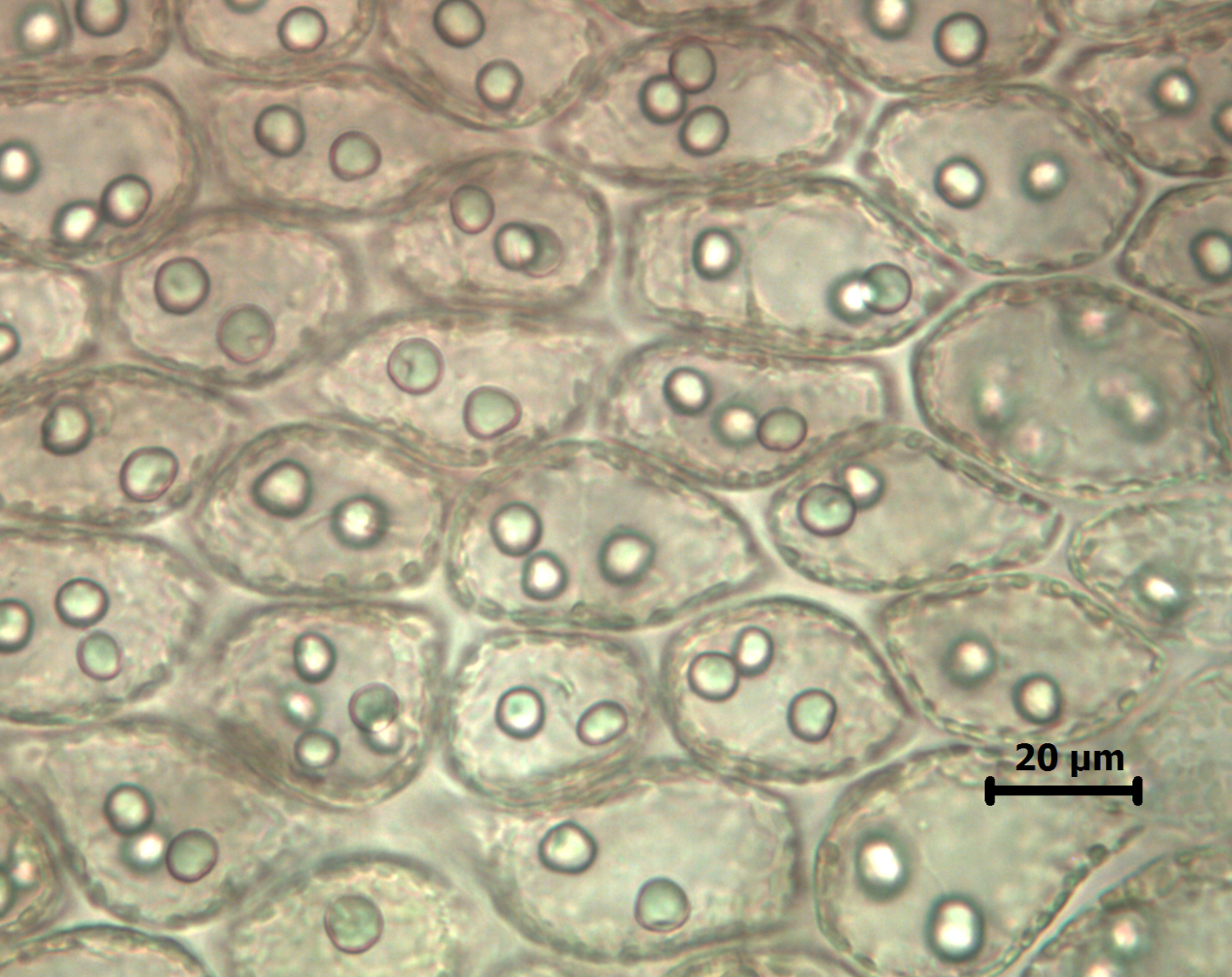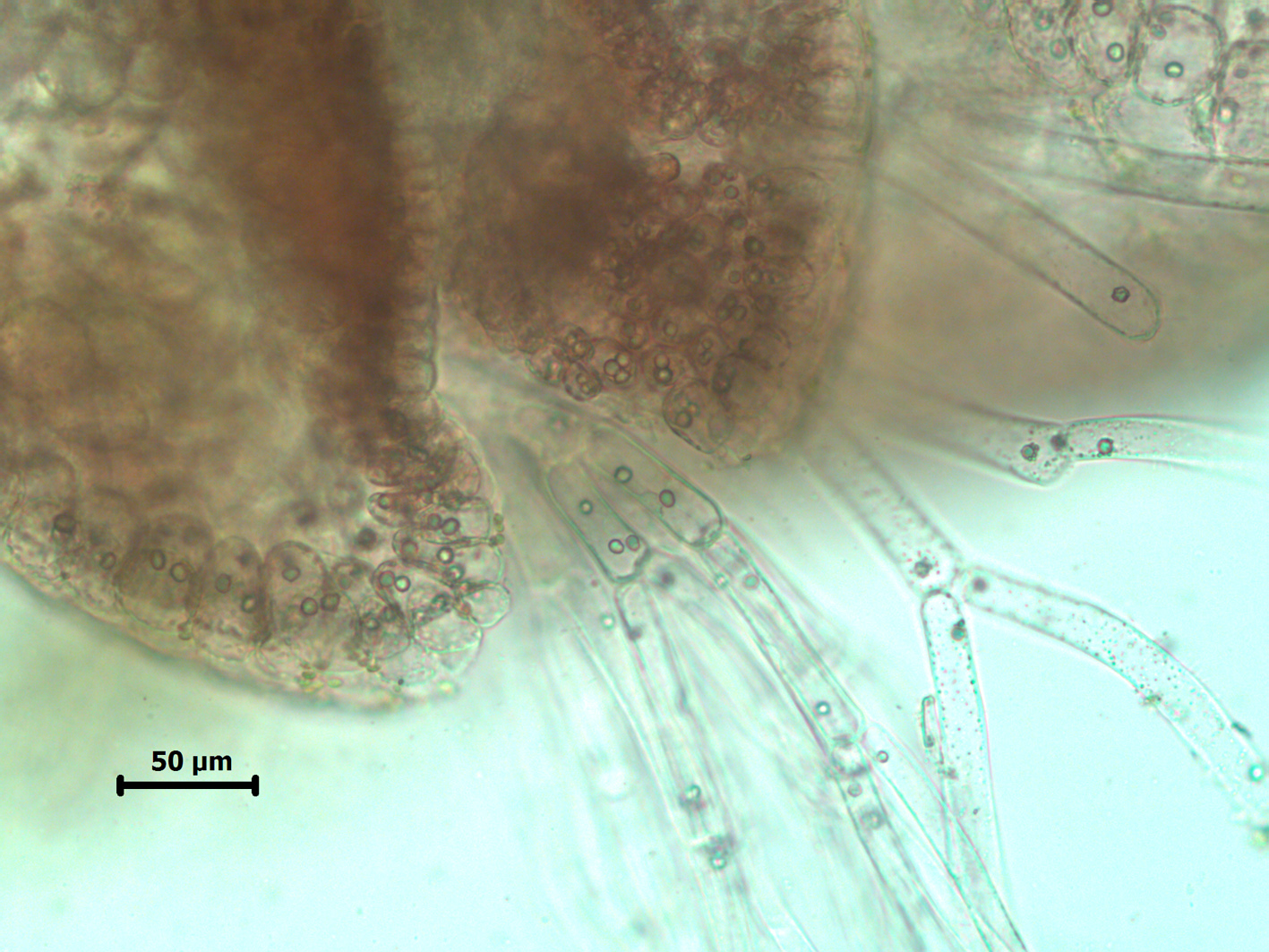Seaweeds of the South African South Coast


Order Ceramiales
Family Rhodomelaceae
Laurencia multiclavata Francis, Bolton, Mattio et R.J. Anderson in Francis et al. 2017: 813-814, Fig. 6
Plants green with pale pink to purple apices, epilithic, caespitose, up to 8 cm tall. Holdfast stoloniferous, axes terete, 0.5-1.0 mm in diameter, some axes percurrent; branching polystichous (subopposite to subverticillate) in 2 (to rarely 3) orders; ultimate branchlets short and wart-like, half the width of main axes, apices truncated. In cross section axial (central) and pericentral cells clearly visible, medullary and cortical cells becoming smaller outwards; inner cortical cells with intercellular spaces, outer cortical cells each containing 2-4 (usually 3) corps en cerise. Reproductive structures not seen. This species may be confused with L. natalensis (see note).
Collections, ecology and regional distribution
Recorded from De Hoop to northern KwaZulu-Natal (24-57). Found on sand-influenced rock in the mid to lower eulittoral and in the shallow sublittoral zones.
Word distribution: A South African endemic.
Type locality: Koppie Allen, De Hoop, Western Cape Province, South Africa (Francis et al. 2017).
Note: Superficially, L. multiclavata can easily be mistaken for L. natalensis, but aside from genetic differences, the former species is polystichously rather than radially branched, has fewer order of branching, does not have a pyramidal outline and has more corps en cerise per cortical cell (there is only one per cortical cell in L. natalensis). (Francis et al. 2017).

Laurencia multiclavata.

Laurencia multiclavata. Cross section: note axial cell and pericentral cells.

Laurencia multiclavata. Surface view of outer cortical cells, each with 2-4 corps en cerise.

Laurencia multiclavata. Trichoblasts emerging from apical pits and with 2-4 corps en cerise per cell. .
References Laurencia multiclavata
Francis, C.M., Bolton, J.J., Mattio, L., Mandiwana-Neudani, T. & Anderson, R.J. 2017. Molecular systematics reveals increased diversity within the South African Laurencia complex (Rhodomelaceae, Rhodophyta). Journal of Phycology 53: 804-819.
Cite this record as:
Anderson RJ, Stegenga H, Bolton JJ. 2016. Seaweeds of the South African South Coast.
World Wide Web electronic publication, University of Cape Town, http://southafrseaweeds.uct.ac.za; Accessed on 07 January 2026.